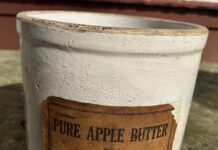I’ve noticed that sometimes, my refrigerator has a stale odor. How can I determine what’s causing the smell, and most importantly, how can I stop the problem from occurring?
It’s likely that what you are smelling is either bacteria or mold that can thrive in moist conditions and are oftentimes found in refrigerators. Moist conditions in a fridge can be caused by condensation from the fridge, humidity from the outside and, yes, spilled foods, experts say. The issue is that once moisture gets into your refrigerator, microbes can multiply and eventually emit a foul smell.
There are several ways to deal with the issue, and with spring weather finally starting to occur, now is a good time to do so. When you plan your spring-cleaning regimen this season, including your fridge and pantry on your to-do list is a really good idea.
First things first, make sure your fridge is set to the right temperature in order to control the moisture content and to make sure your food is being preserved correctly.
Refrigerators should be set to maintain a temperature between 34 and 40 degrees Fahrenheit to safely preserve your food, the U.S. Department of Agriculture advises. Setting the temperature too low will cause your refrigerator to work overtime and could also freeze some of your foods.
Next, follow this simple rule: Clean any spills inside the fridge immediately with warm, soapy water and then rinse them with clear water. It’s not recommended that you use any cleaning solvents, as this could allow chemical fumes or tastes into your food and ice, making them unsafe to eat, the USDA says.
You also want to make sure you store your leftovers safely, and throw out any foods that have spoiled. Generally, leftovers shouldn’t be left in the refrigerator more than four days. If you plan to store raw poultry and ground meats for more than one or two days, it’s best to store them in your freezer rather than your fridge.
If need be, you can do a deep cleaning of your fridge. To do so, fill a cooler with ice to store the food from the fridge while you are cleaning it. Clean each shelf and compartment with warm, soapy water.
The exterior of your fridge also needs to be kept clean, which includes keeping it free of dust and lint. You can clean the condenser coil several times a year with a brush or vacuum cleaner to remove dirt, lint or other accumulations to ensure efficiency and maintain proper temperature, the USDA says.
Now that you’ve got your fridge all sparkly clean and fresh, you can move on to your pantry. It too should be included in your spring-cleaning regimen.
The USDA advises that you:
- Check the canned goods in your pantry or kitchen cabinets. Throw out cans that are leaking, rusted, bulging or badly dented. You shouldn’t eat food from cracked jars, jars with loose or bulging lids, or any container that spurts liquid when you open it.
- Throw out any food that you suspect is spoiled. Never taste the food to determine its safety.
- Wipe off sticky containers, along with crumbs and spills on your pantry shelves, with all-purpose cleaner, vinegar, or warm soap and water.
USDA also advises that you check the dates on your foods, keeping in mind that:
- “Best if used by/before” dates indicate when a product will be of best flavor or quality. They are not purchase or safety dates.
- “Sell-by” dates tell the store how long to display the product for sale for inventory management. They also are not safety dates.
- “Use-by” dates indicate the last date recommended for the use of the product while at peak quality. They are not safety dates except when used on infant formula.
- High-acid canned food such as tomatoes, grapefruit and pineapple have a shelf life of 12 to 18 months beyond their listed dates.
- Low-acid canned food such as meat, poultry, fish and most vegetables can be kept for two to five years beyond their listed dates if the cans remain in good condition and have been stored in a cool, clean and dry place.
Chow Line is a service of the College of Food, Agricultural, and Environmental Sciences and its outreach and research arms, OSU Extension and the Ohio Agricultural Research and Development Center. Send questions to Chow Line, c/o Tracy Turner, 364 W. Lane Ave., Suite B120, Columbus, OH 43201, or turner.490@osu.edu.
Get more Great Recipes in your inbox each week by getting
Around the Table.
It's a FREE weekly e-newsletter all about food. Sign Up Today!
















